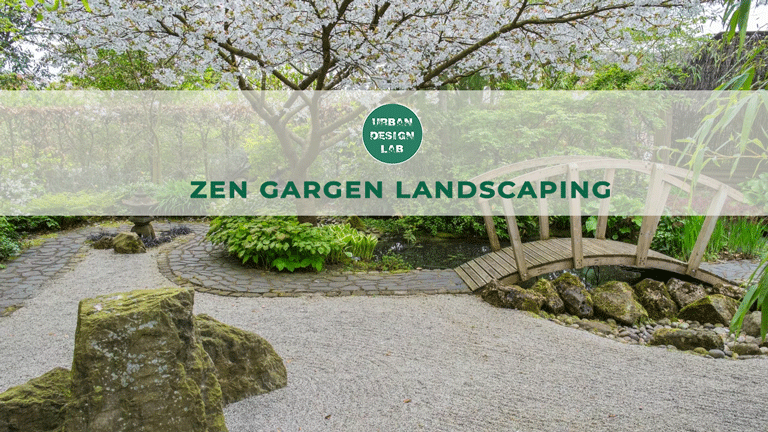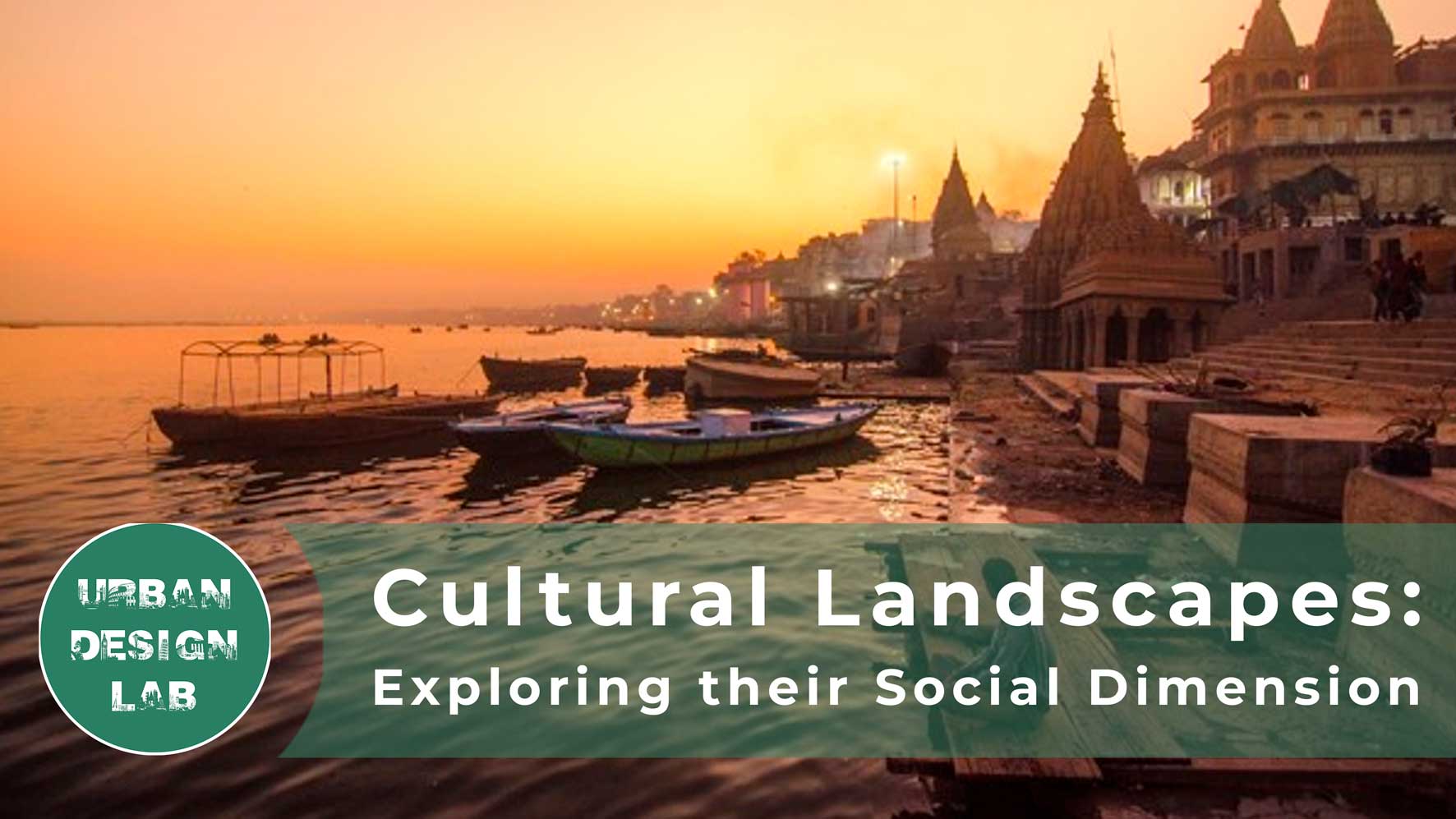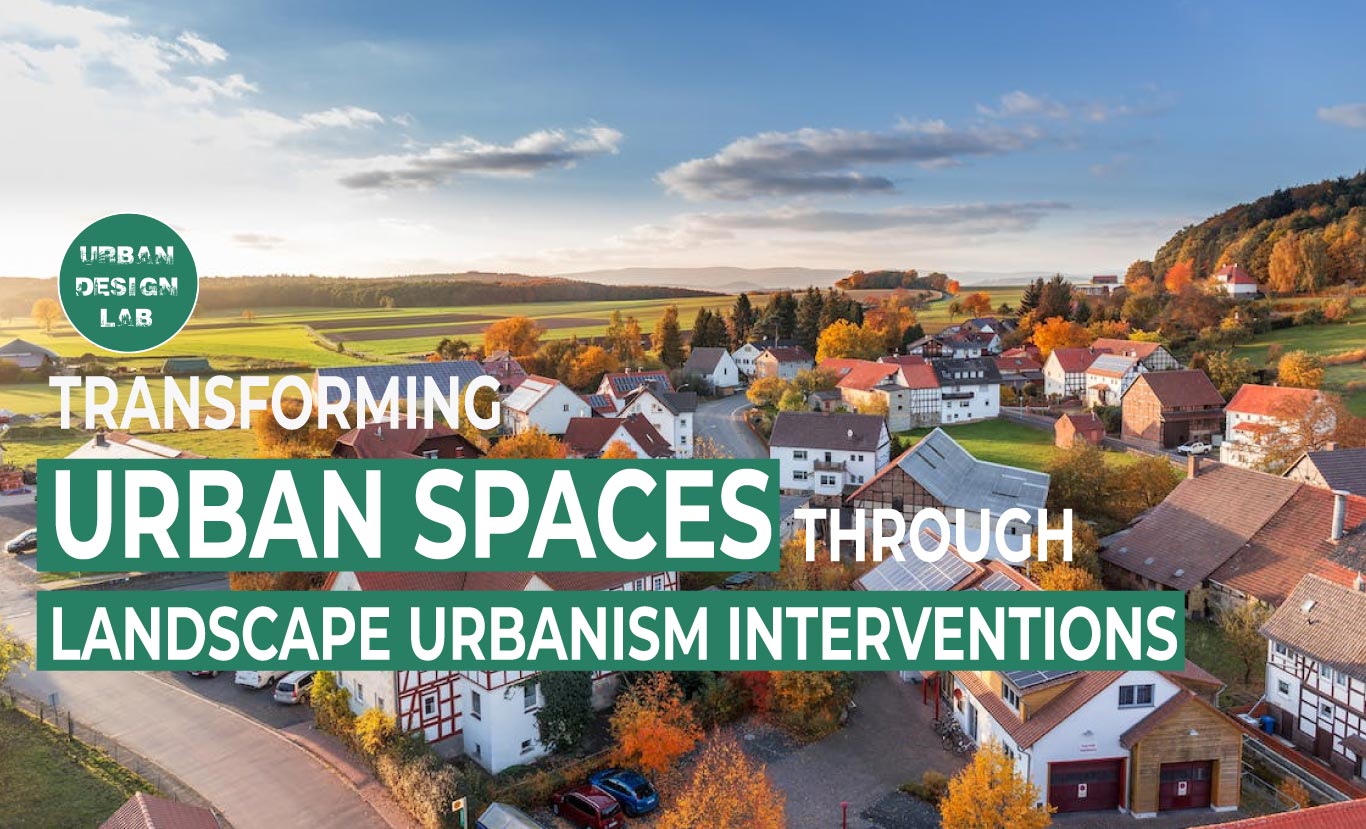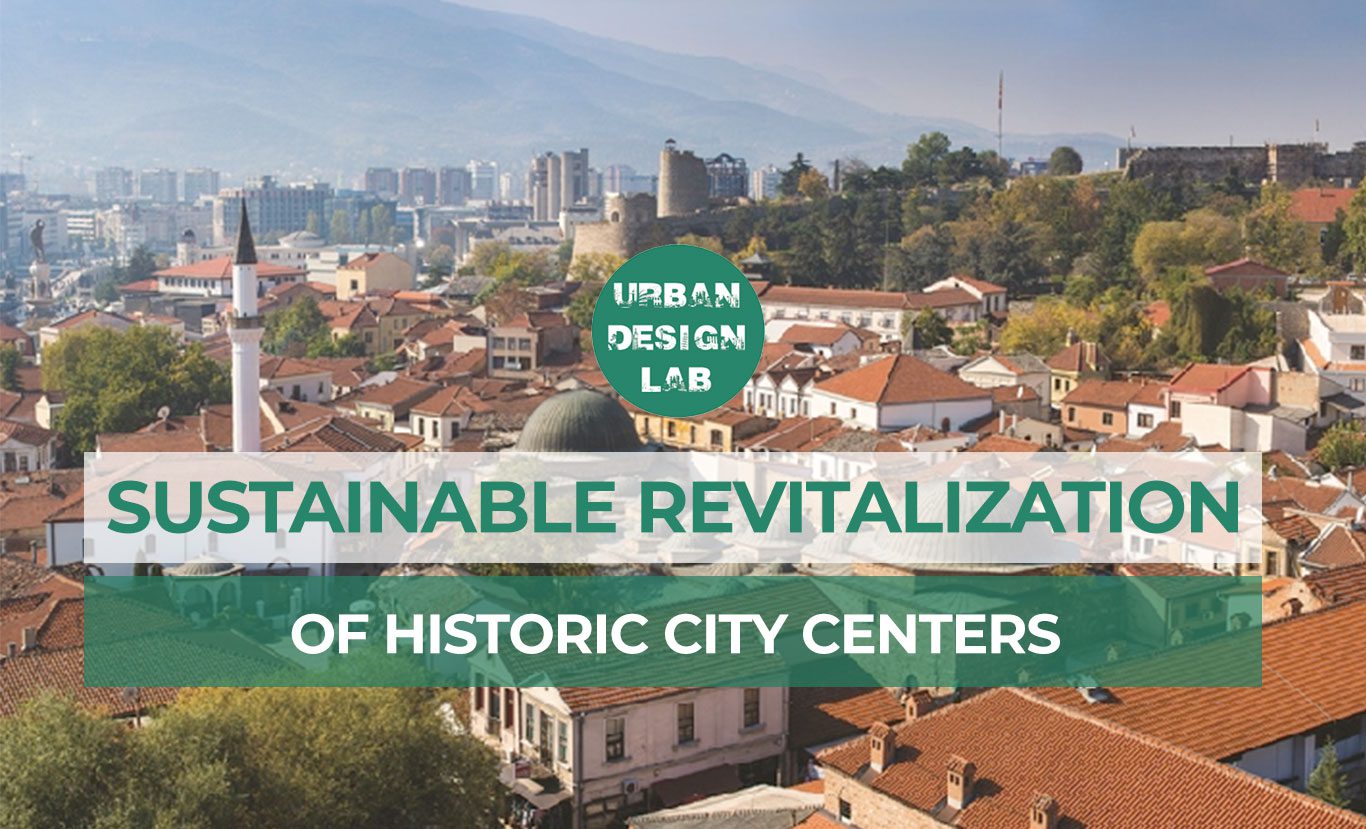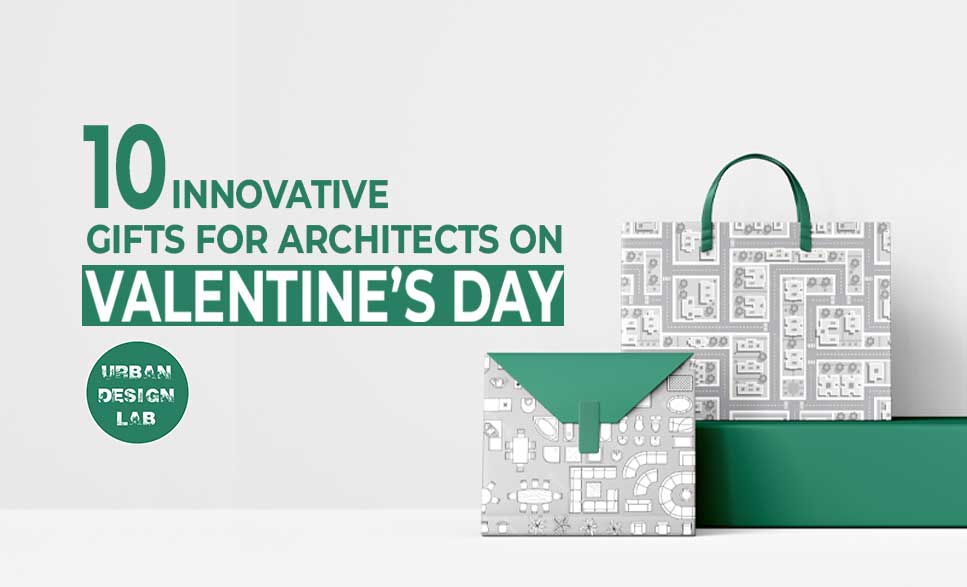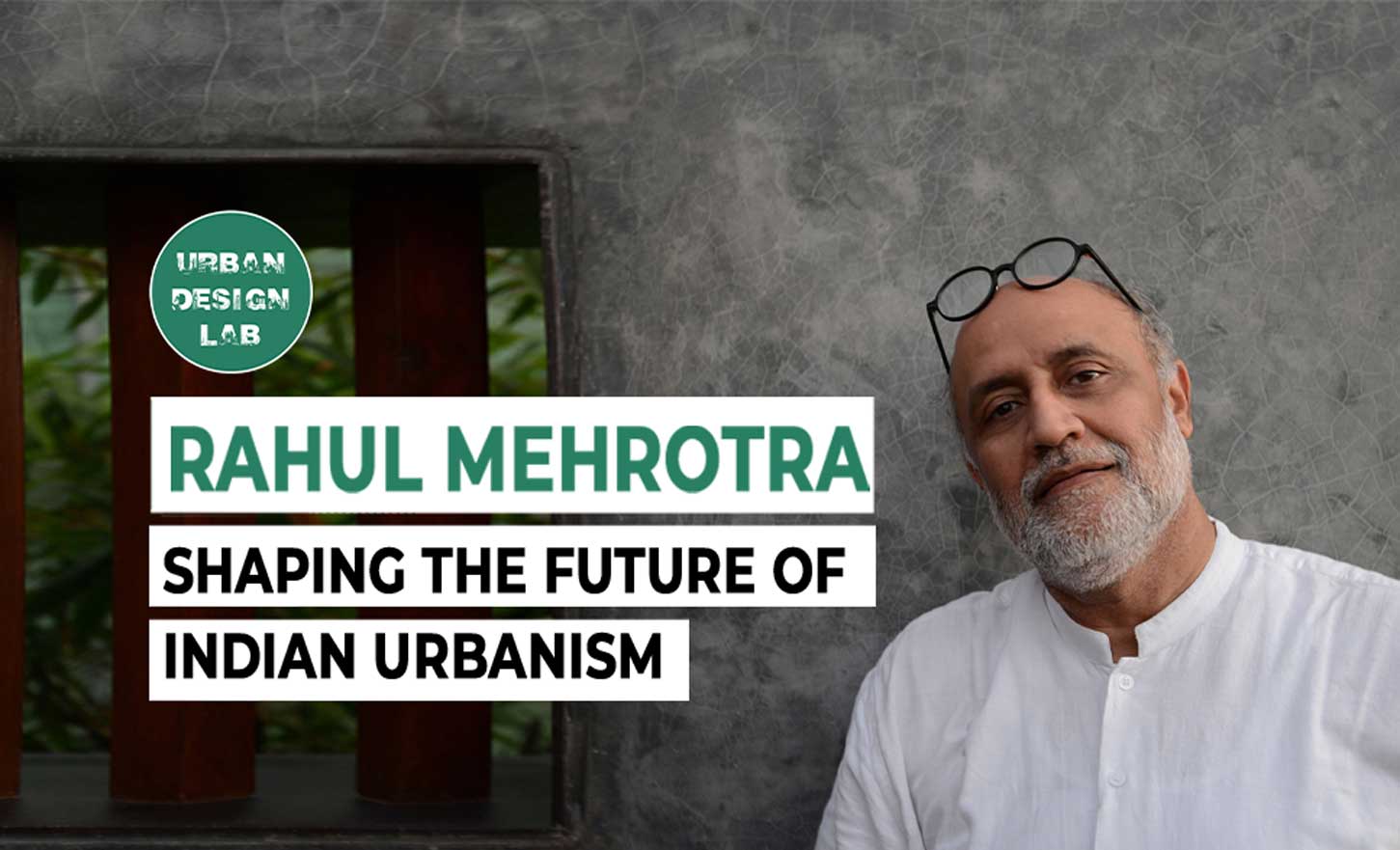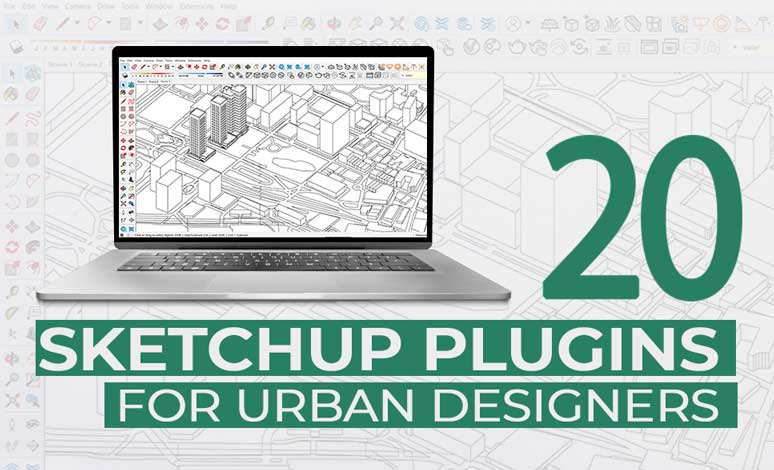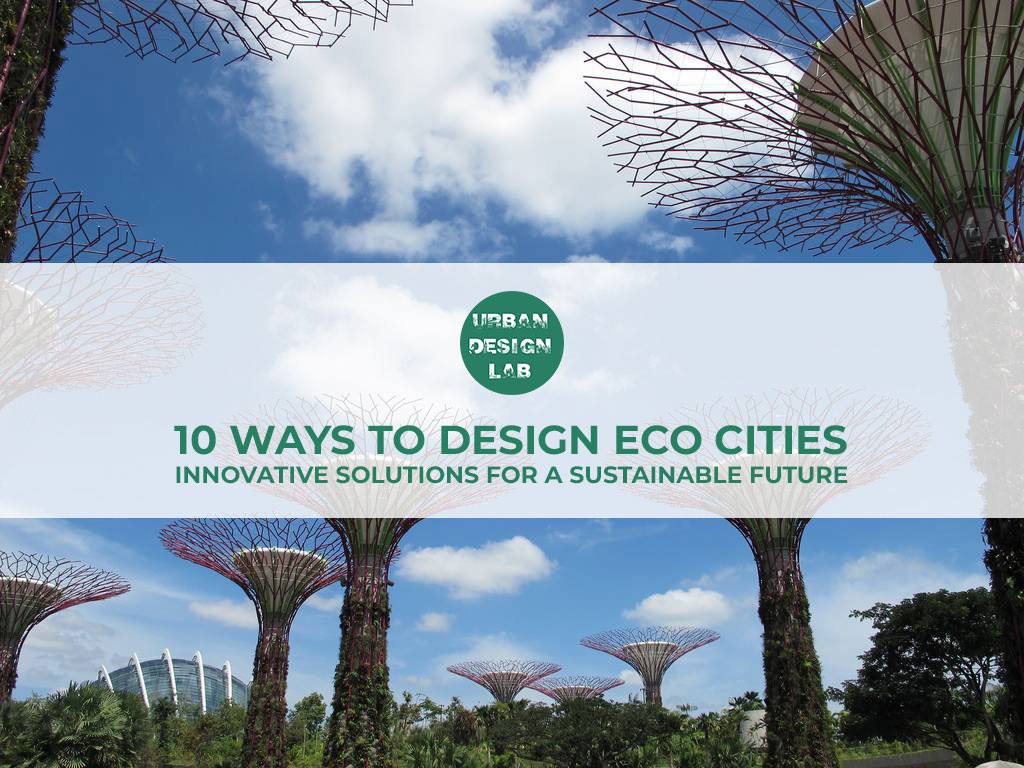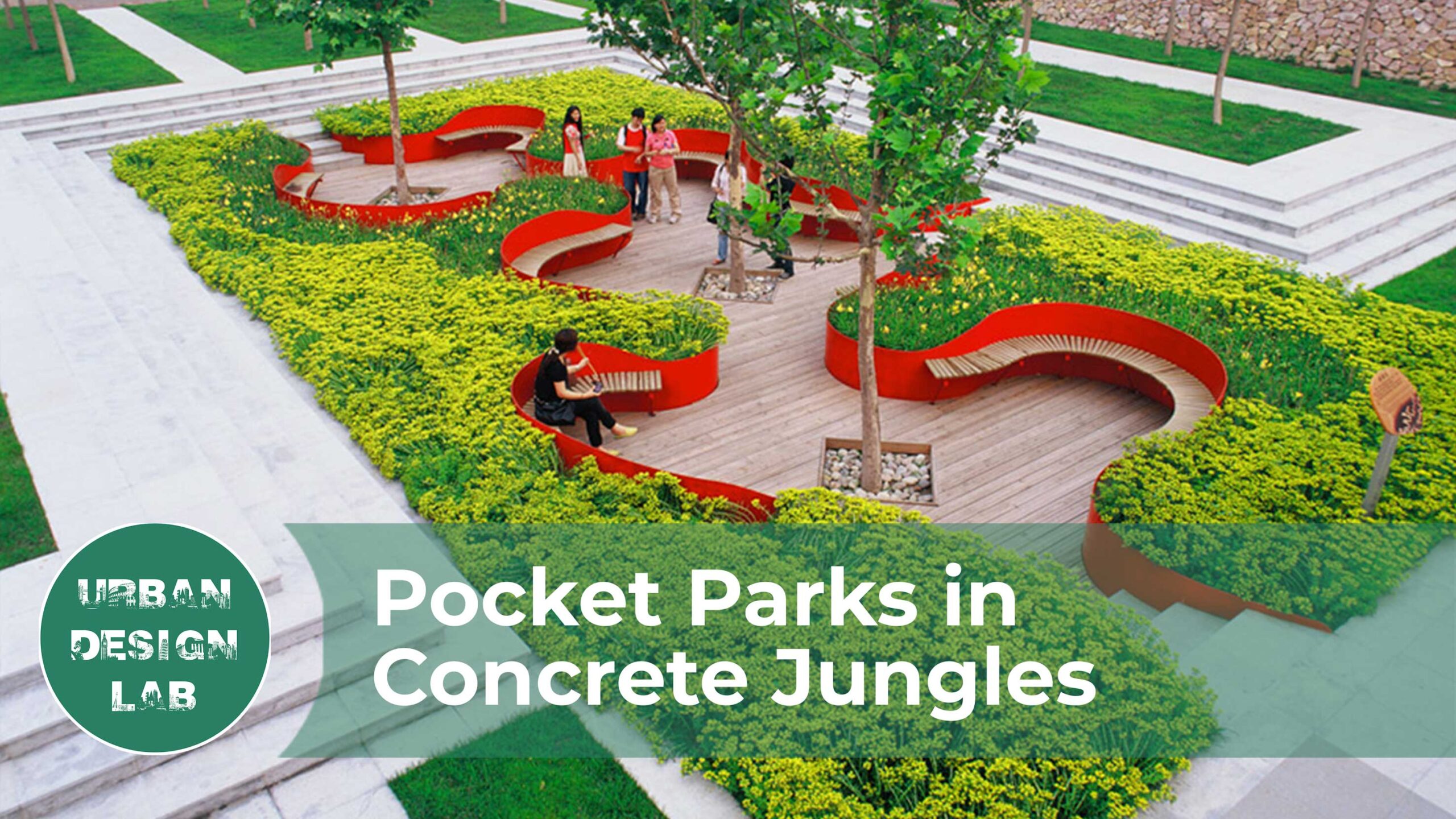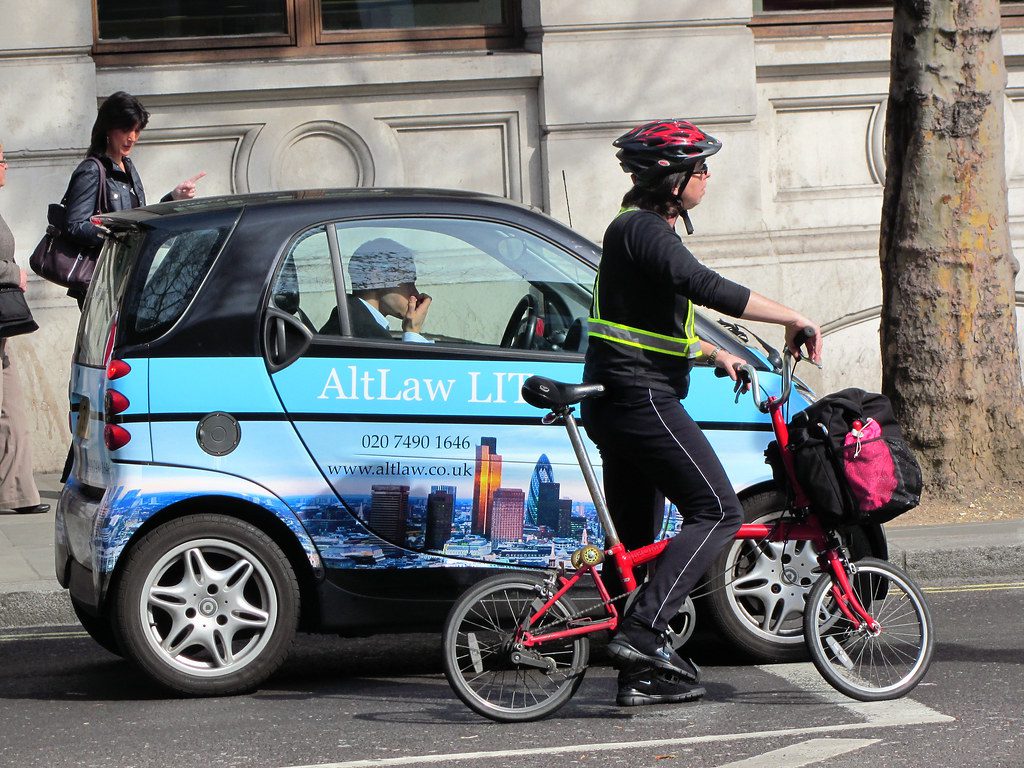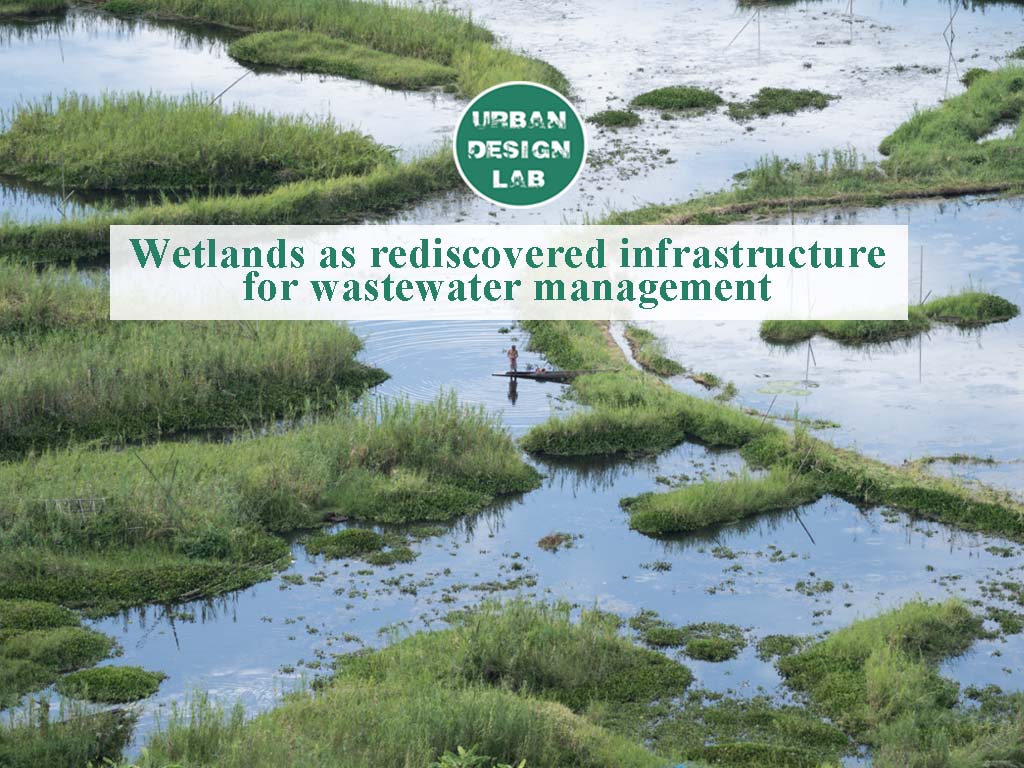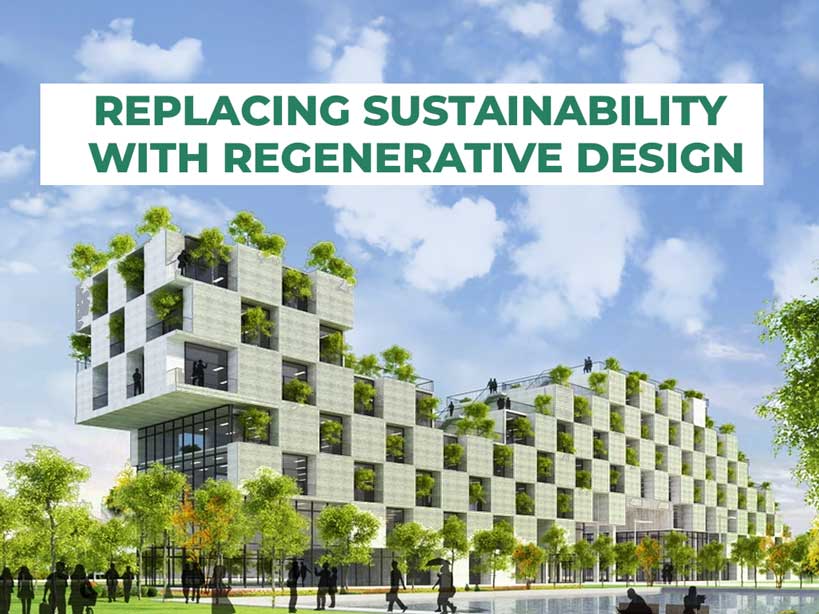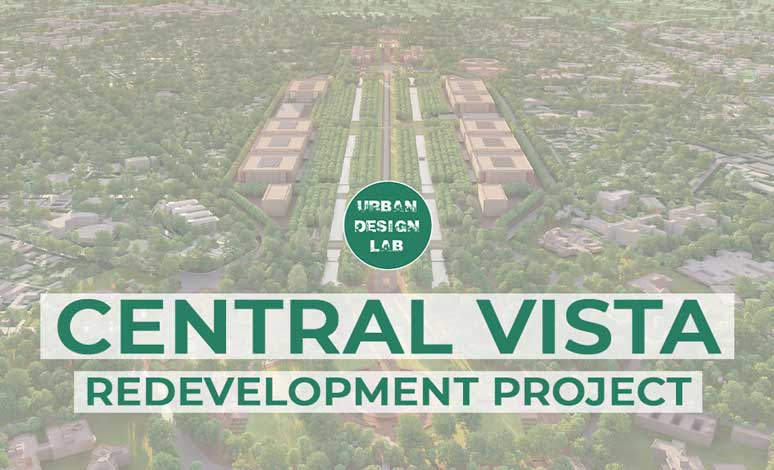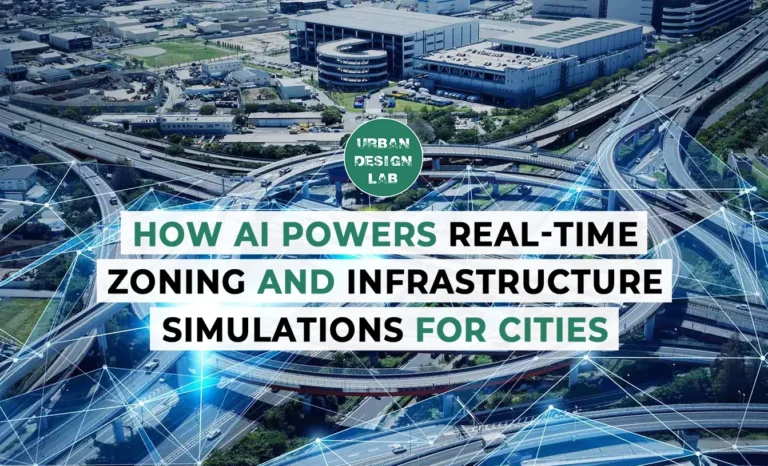
Urban Currents | Medellin | Colombia
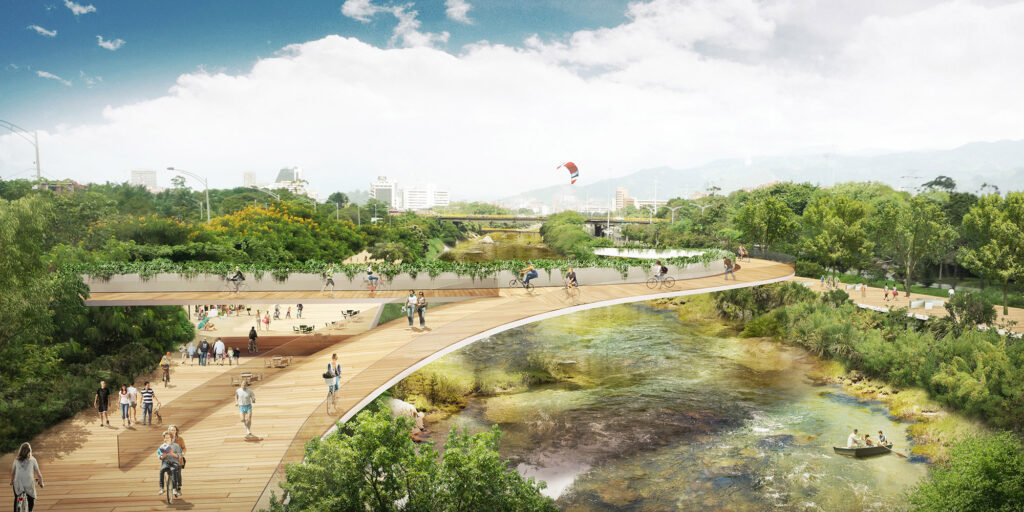
A river, by definition, refers to movement. Only if we interpret the Medellin River area as a single geographic entity composed of natural elements (fauna and flora) and artificial (history, culture, mobility) we understand that the opportunity presented by this call goes beyond the area defined for the contest. Ideas of history and identity are key to any city. Currently, many cities choose to erase/cover ‘undesirable’ history and forms of the city with classic forms of public space. Our proposal is to reuse, as much as possible, the existing city forms and to reinterpret them in a more contemporary, people-friendly manner. This is will remain more true to the city’s collective memory, provide a richer public space and be massively more efficient in terms of investment spending. Working with ‘found objects, as it is called in the art world, the proposal grounds the design in its place.
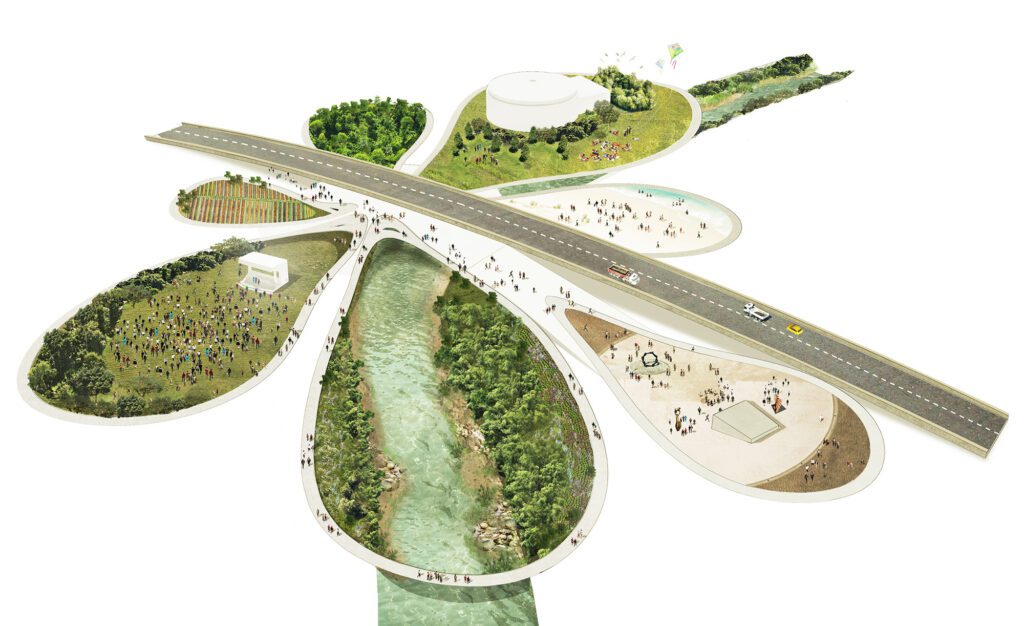
Much of the land available along the riverfront is trapped in cloverleaf car interchanges, unreachable spaces for pedestrians. By simply removing the ‘inner leafs’ of the interchanges, pedestrians can access these spaces. In combination with the removal of half of the roadway next to the riverfront, much more space is given to people. The existing asphalt is reused and reinterpreted for pedestrian paths, activities, etc. The existing road bridges are adapted to provide grand pedestrian access points to the riverfront. Further, this removal of the ‘inner leafs’ steam lines the number of cars given access to the riverfront. It can still function as a driving corridor but is treated as a boulevard and no longer permits drivers to do every single movement. It allows on, off movements, which will transform the riverfront boulevard into a place to cruise, not to commute.
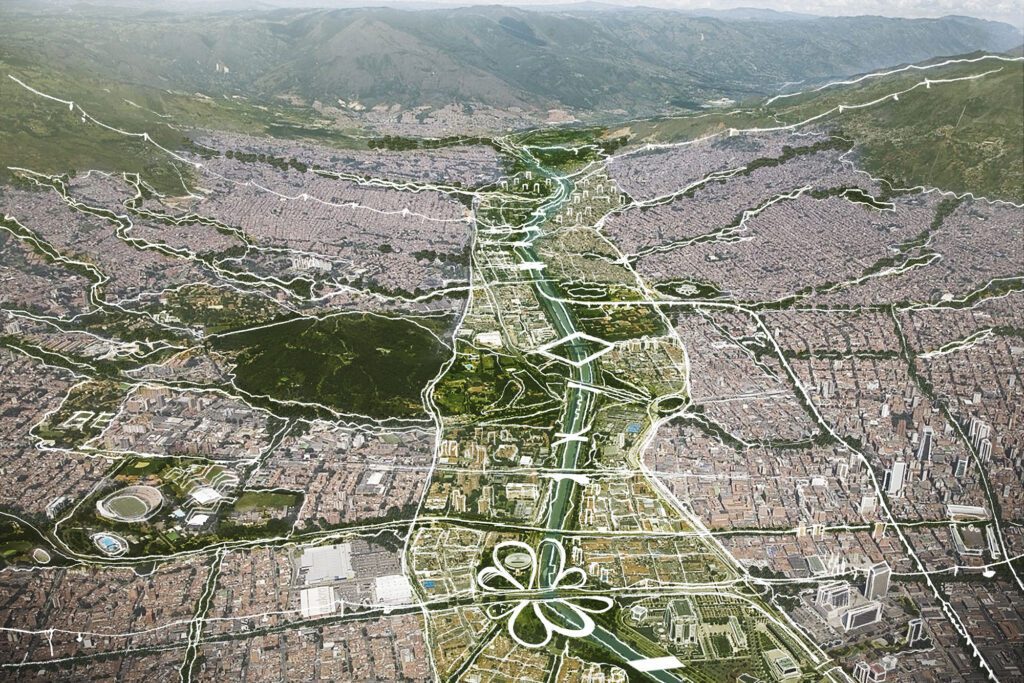
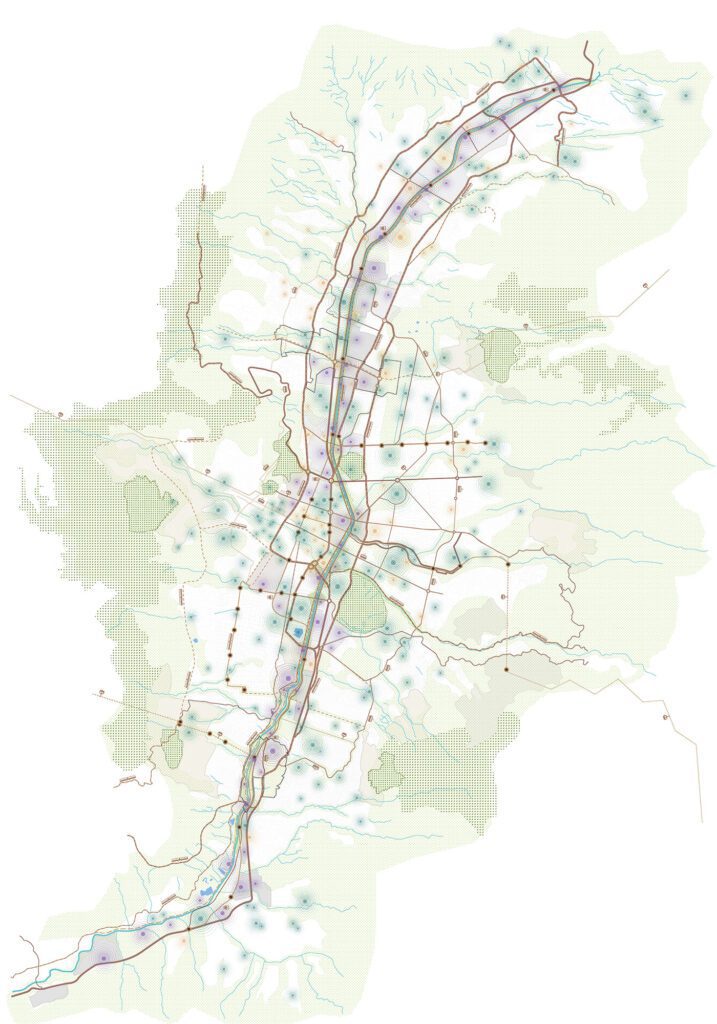
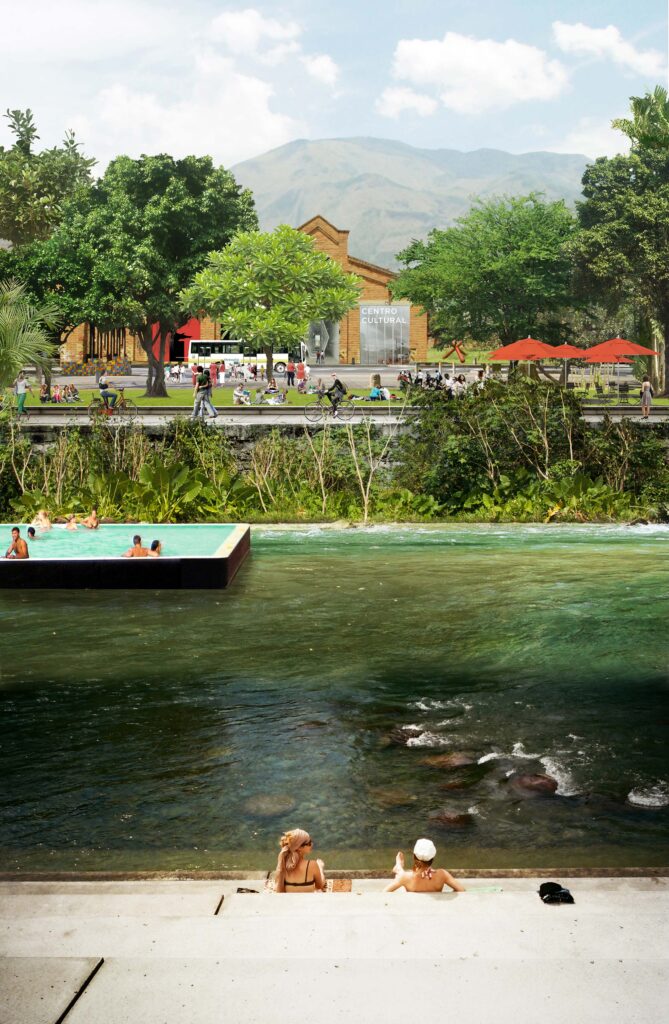
Recycling old industrial buildings, in combination with new housing developments, foster ideal conditions for the creation of a vibrant public space. The river connects the sequence of clear public spaces. The BRT stations will be directly connected with the new Riverside.
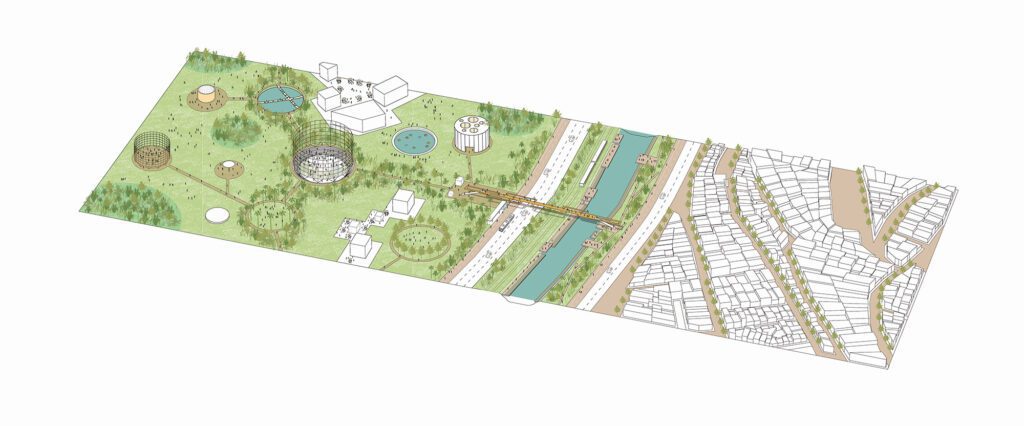
The meeting between the river and its tributaries becomes an opportunity for water management. The quality of the water is improved with the biological function of various plant species. An innovative landscape becomes a public park where people can learn in-situ about ecology and sustainability.
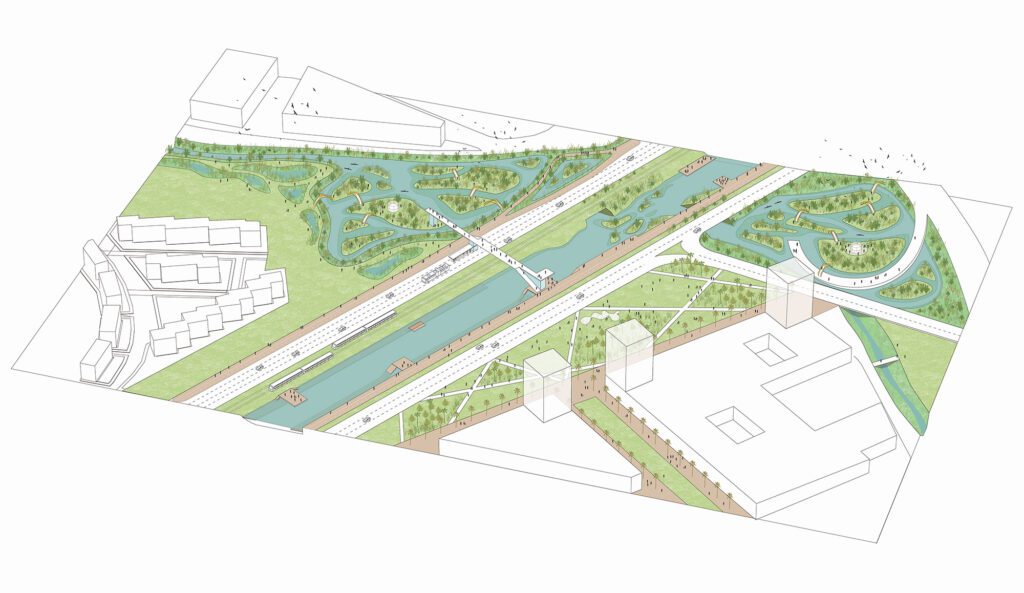
Once the mobility system is re-structured and re-organized, some infrastructures are unnecessary and therefore abandoned. The infrastructural ‘clover leaves’ can be colonized by cyclists and pedestrians. A variety of activities can occur in these new facilities and become the symbol of a city that has reclaimed the forgotten spaces.
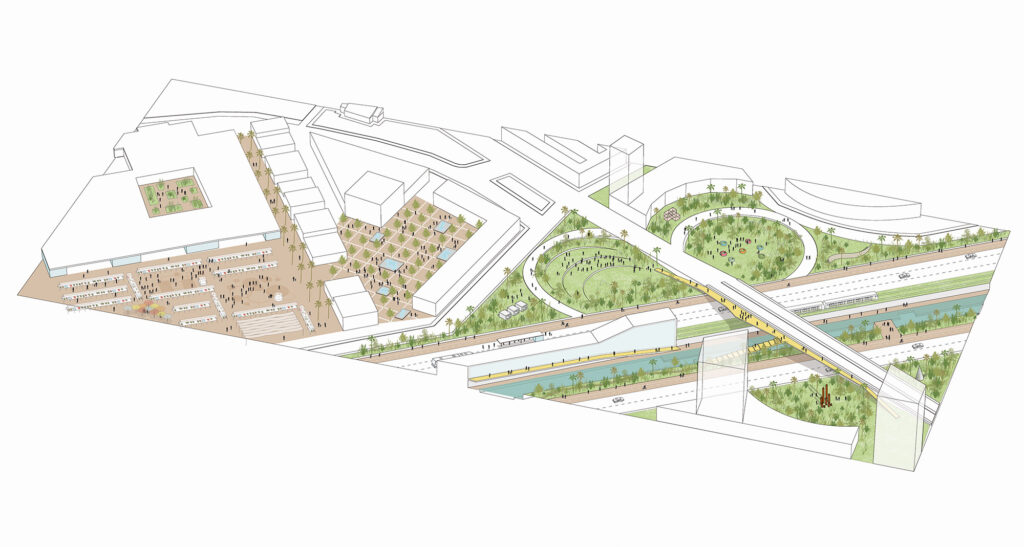
Architects: Open fabric
Location: City of Medellin
Team Members: Francesco Garofalo, Barbara Costantino, Andrea Caspoli
Client: City of Medellin
Program: Public space design, pavilions, bridges
Status: Competition Submission
Site Area: 423 ha
Project Year: June 2013 – July 2013
Related articles


Rethinking Urban Planning Careers in India
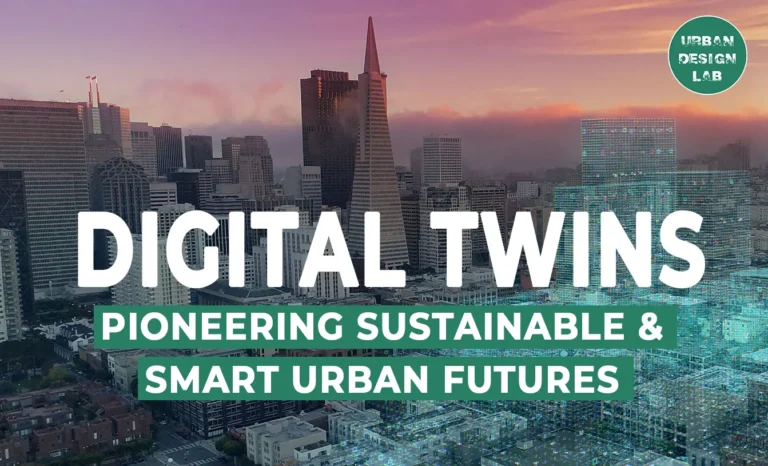
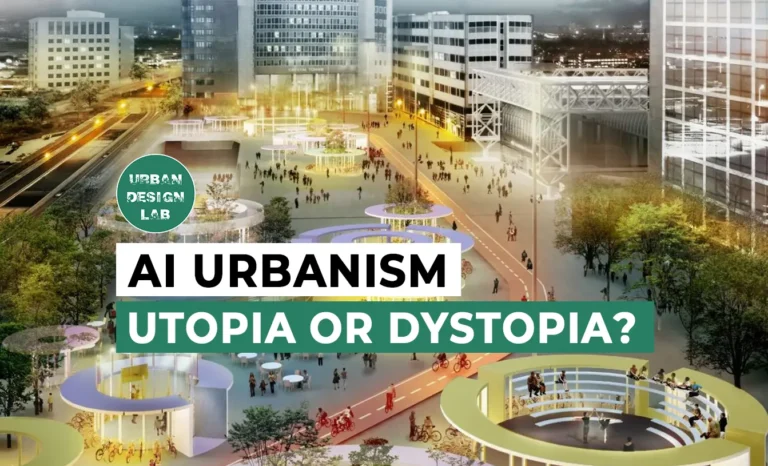
AI Urbanism: Utopia or Dystopia? The Unvarnished Truth.
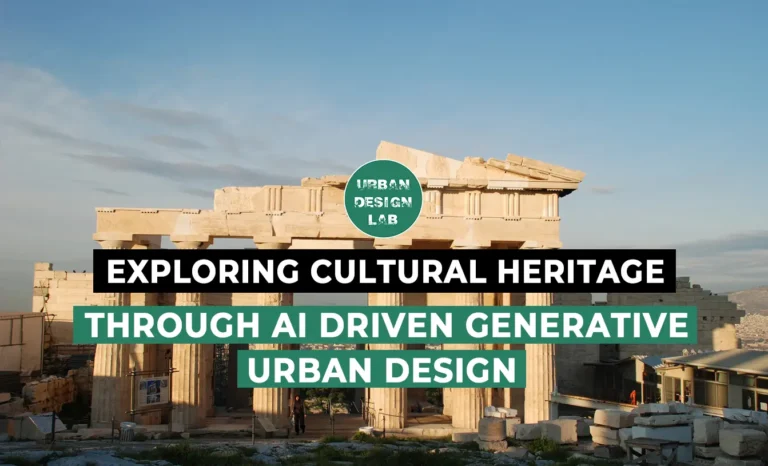
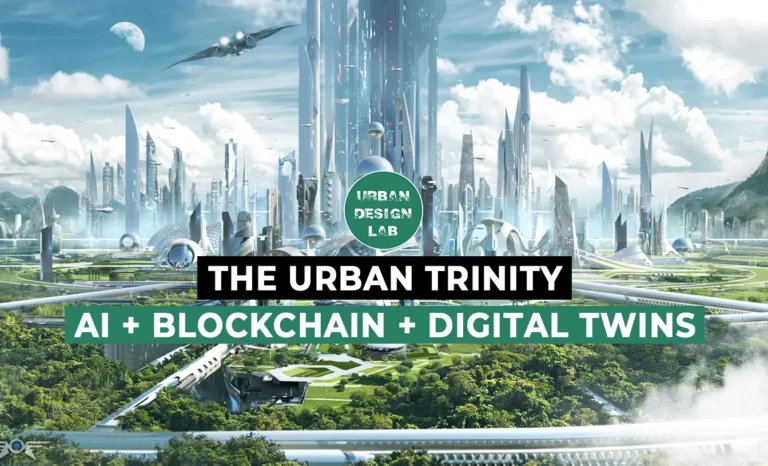
5-Days UDL GIS
Masterclass
GIS Made Easy – Learn to Map, Analyse, and Transform Urban Futures
Session Dates
14th-18th July 2025

Free E-Book
From thesis to Portfolio
A Guide to Convert Academic Work into a Professional Portfolio”
Recent Posts
- Article Posted:
- Article Posted:
- Article Posted:
- Article Posted:
- Article Posted:
- Article Posted:
- Article Posted:
- Article Posted:
- Article Posted:
- Article Posted:
- Article Posted:
- Article Posted:
- Article Posted:
- Article Posted:
Sign up for our Newsletter
“Let’s explore the new avenues of Urban environment together “



























